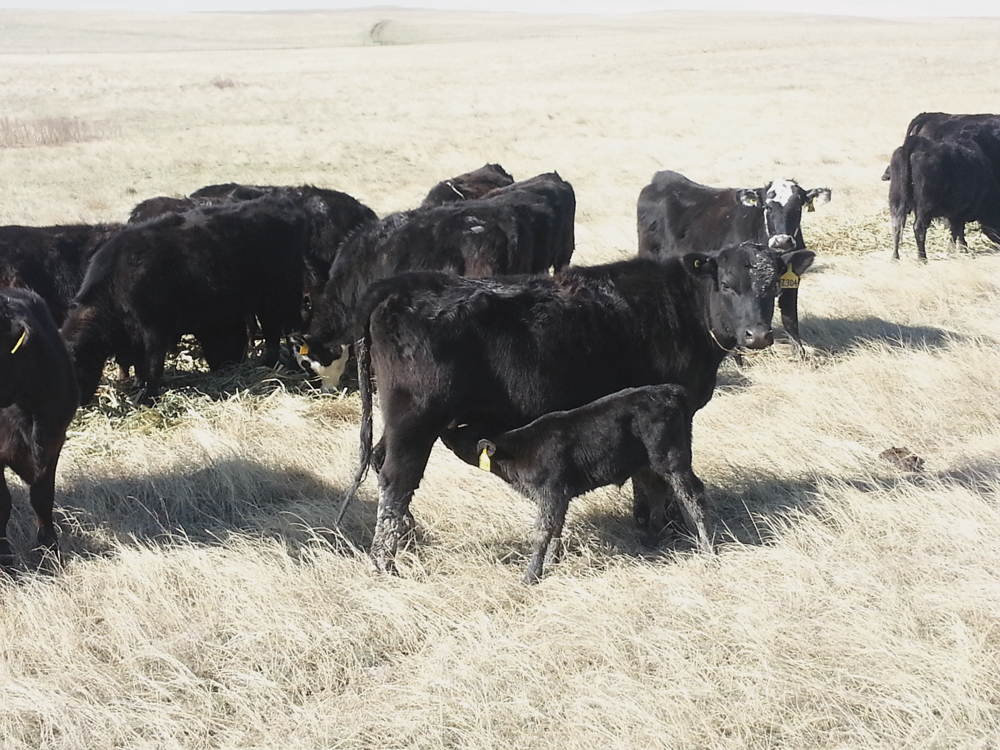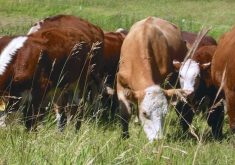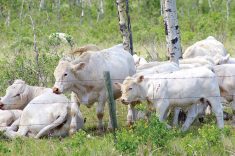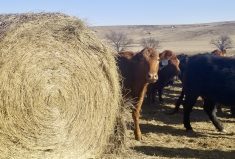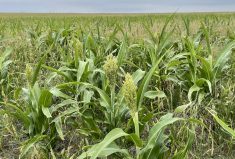Calving season is in full swing, and the first 60 to 90 days post-calving are the most nutritionally demanding period in the production cycle, according to two North Dakota State University animal scientists.
“The expectations for a cow at this time are many,” says Janna Block, livestock systems specialist at the Hettinger Research Extension Center. “She must produce milk, repair her reproductive tract, resume her estrous cycle, get pregnant again and possibly continue to grow. Total nutrients — water, energy, protein, vitamins and minerals — consumed each day by the cow are utilized based on biological priorities of maintenance, growth, lactation and reproduction. Because reproduction is lowest on the priority list, it is one of the first factors affected if nutrition is inadequate between calving and breeding. A typical 1,400-lb. cow producing 20 lbs. of milk per day at peak milk (about 60 days post-calving) needs 10 per cent crude protein (CP) and 59 per cent total digestible nutrient (TDN) as a percentage of her dry matter intake to meet production demands.”
Read Also

Pig transport stress costs pork sector
Popular livestock trailer designs also increase pig stress during transportation, hitting at meat quality, animal welfare and farm profit, Agriculture and Agri-Food Canada researcher says
“This time of high nutrient requirements for cows occurs in conjunction with pasture turnout on many ranches in the region,” adds Miranda Meehan, Extension livestock environmental stewardship specialist and animal sciences assistant professor. “Typically, pasture turnout takes place in mid-May or early June when grasses are actively growing and have high crude protein of at least 15 per cent and total digestible nutrient levels of at least 60 per cent, which would be sufficient to meet cow requirements.”
However, due to forage shortages and lot conditions, many producers already have turned cattle out on pasture to graze standing forage from the 2018 growing season, the specialists say. They recommend that producers consider forage availability and quality to ensure that nutrient requirements of grazing livestock are met.
The most accurate way to determine the amount of standing available forage is the clip and weigh method. Detailed instructions are in the NDSU Extension Range and Forage Production Sample Kits publication found at the NDSU website.
“Quality of dormant forage can vary widely depending on species, environmental factors and pasture management,” says Meehan.
In this region, the majority of grazing resources are cool-season dominant. This standing forage is low in crude protein, with cool-season species typically containing less than five per cent CP and warm-season species around six per cent CP. Meehan says energy content also is generally low for these forages, with cool-season grasses falling below 50 per cent TDN and warm seasons at about 52 per cent TDN. Even if forage availability is adequate, cows may not physically be able to eat enough dormant forage to fulfil requirements.
“Forage intake is generally limited by the capacity of the digestive tract,” Block says. “High-quality forage is digested more rapidly and has an increased passage rate, which allows for increased intake. Some general rules of thumb have been established using forage quality to estimate forage intake on a dry matter basis as a percentage of body weight for lactating cows. For low-quality forage (less than 52 per cent TDN), dry matter intake will be around 2.2 per cent of body weight. This amount may not supply adequate protein and energy to meet demands.”
Depending on the quantity and quality of available forage, supplementation may be necessary to ensure that requirements of lactating cows are met, say Block and Meehan. A variety of protein and energy supplements are available that can help fill nutritional gaps from forage. The objective is to balance nutrient deficiencies in a cost-efficient manner.
“This time of year, cows often prefer to graze and forage rather than consume hay,” Block says. “However, high-quality forage can be a source of additional nutrients. If feeding grains or other starches as an energy supplement, the maximum level to avoid negative impacts on fibre digestibility is 0.4 per cent of the cow’s body weight. Fibre-based supplements, such as wheat midds, distillers grains or other co-products, can be used at higher levels. When forage contains less than seven per cent crude protein, some type of protein supplement with at least 20 per cent crude protein is probably necessary. This includes feeds such as alfalfa hay, soybean meal, distillers grains and commercial supplements. Evaluate the appropriate supplement for a given situation based on nutrient content, availability and price.”
Block and Meehan encourage producers to compare supplements on a cost-per-pound-of-nutrient basis by using the NDSU Extension publication Comparing Value of Feedstuffs available at the NDSU website.
They agree that supplying adequate nutrition for lactating cows is extremely critical in ensuring production goals are met. Producers need to develop rations that can economically meet this challenge, particularly when feed prices are high.





